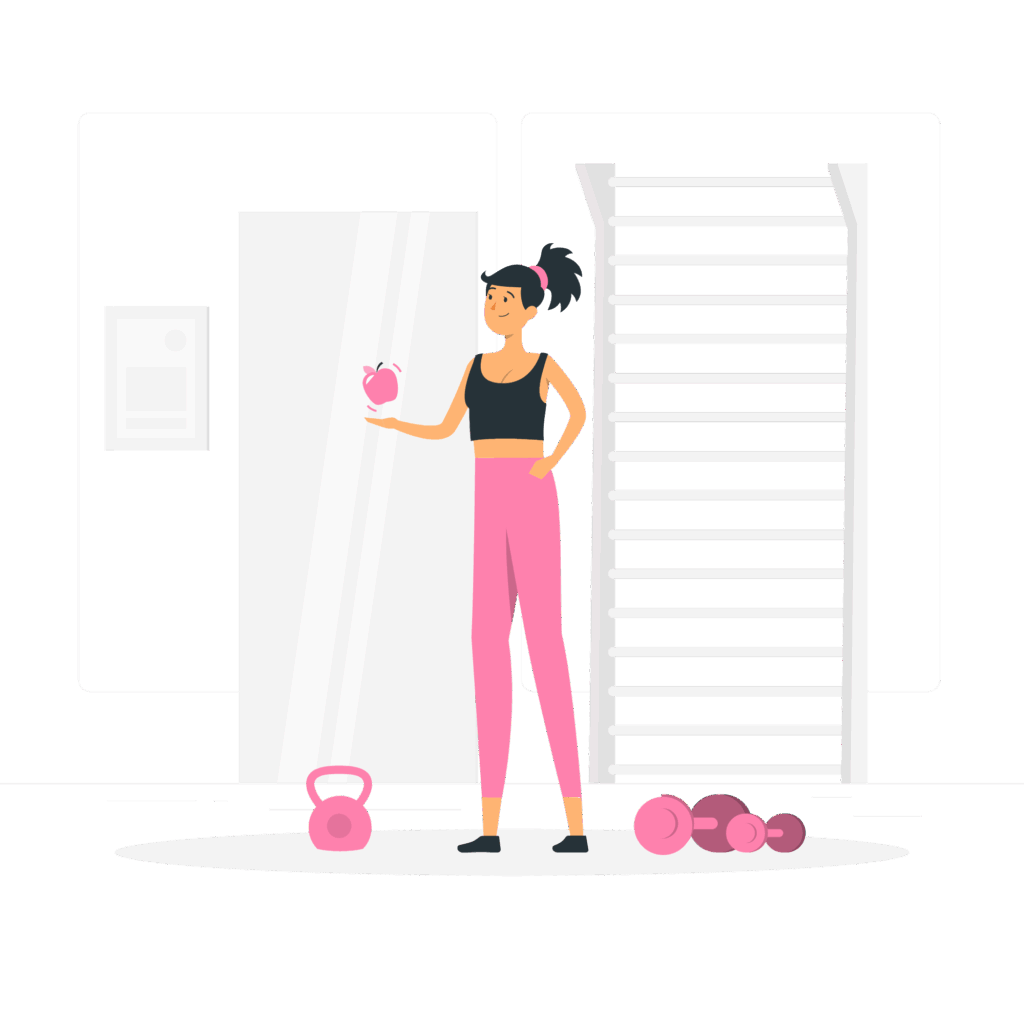Many women expect their belly to “snap back” quickly after childbirth. In reality, a post-baby belly is extremely common — and usually due to a combination of factors: stretched abdominal muscles (diastasis recti), stretched skin, retained fluid, and pregnancy-related fat stores. This guide explains why it persists, what the research-backed fixes are, and how to progress safely.
What Causes a Postpartum Belly?
- Diastasis recti (abdominal separation): The growing uterus pushes the two rectus abdominis (six-pack) muscles apart during pregnancy. The connective tissue (linea alba) stretches, leaving a gap or bulge. This is very common; many women experience some separation during pregnancy.
- Stretched skin and connective tissue: Skin and fascia must retract and tighten after pregnancy — a slow process that varies by age, genetics, and weight gain during pregnancy.
- Hormones and fluid retention: Pregnancy hormones and retained postpartum fluid can make the belly look larger for weeks to months. Breastfeeding and natural diuresis help but timing varies.
- Fat stores: The body retains extra fat during pregnancy as energy reserves for breastfeeding and recovery; losing it takes gradual caloric balance and activity.
What Trusted Sources Emphasize
Top medical resources like the NHS, Mayo Clinic, Healthline, and Cleveland Clinic highlight the same key points:
- Diastasis recti is common and often improves naturally.
- Gentle pelvic and core exercises are safe starting points.
- Avoid crunches and sit-ups in the early weeks.
- Professional physiotherapy is highly effective for persistent separation.
- Nutrition and gradual exercise are the cornerstones of fat loss and recovery.
How Long Does a Postpartum Belly Usually Last?
Recovery times vary:
- 0–8 weeks: Uterus shrinks; much of the immediate postpartum belly (baby + fluid) reduces.
- 2–6 months: Gradual tightening of skin and recovery of muscle tone for many women. Some diastasis resolves naturally during this window.
- 6–12+ months: For some women the separation or pooch persists and needs targeted rehab or professional help. If gaps remain obvious after ~8–12 weeks, see a doctor or physiotherapist.
Steps to Heal Your Postpartum Belly
1) Get a Medical Check
If your belly looks very bulged, you feel a hard ridge down the midline, or the gap is wide (2+ fingers), get checked by your doctor or referred to a pelvic health physiotherapist. Persistent separation can contribute to back pain and pelvic floor problems.
2) Reconnect with Your Core Safely
Start with gentle core activation exercises that target the deep abdominal layer (transverse abdominis) rather than crunchy, bulging moves:
Diaphragmatic / deep belly breathing
Pelvic tilts (lying on your back, flattening the lower back by engaging abs)
Glute bridges (activating core and glutes together)
Do these daily and progress slowly.
3) Avoid Harmful Moves Early On
Skip traditional crunches, full sit-ups, heavy lifts, or twisting moves until cleared by a professional — they can worsen the gap.
4) Build Functional Strength (Progression)
After initial rehab (and medical clearance), add:
Modified planks, bird-dog exercises
Squats, light resistance band rows/presses
Gradual weight training to rebuild strength and boost metabolism.
5) Use Gentle Cardio
Walking, swimming, or cycling 3–5x/week helps reduce fat stores and improves cardiovascular fitness without stressing healing tissue.
6) Prioritize Nutrition & Hydration
Focus on:
- High-protein foods for tissue repair
- Plenty of fiber for digestion
- Reduced added sugars and refined carbs
- Adequate hydration for skin and tissue recovery
7) Posture & Daily Habits
Standing tall, engaging your deep core during daily tasks, and avoiding slouching supports recovery. Small adjustments like rolling out of bed sideways after a C-section reduce unnecessary strain.
- Practical 8–12 Week Rehab Plan (Sample)
- Weeks 1–4 (gentle reconnection)
- Deep breathing, 10 pelvic tilts, short daily walks
Weeks 4–8 (stability & strength)
- Add bridges, bird-dog, and leg slides
- Walks extended to 20–30 minutes
- Weeks 8–12 (progressive strength)
- Modified planks, squats, resistance bands
- Two light full-body strength sessions/week
If bulging or pain worsens, pause and seek professional advice.
When to See a Specialist
- Bulging or doming that worsens with activity
- A gap wider than 2–3 fingers persisting after 8–12 weeks
- Pain, pelvic discomfort, or urinary leakage
- Suspicion of a hernia (bulge, pain, nausea)
Realistic Expectations
Skin and tissue healing vary by genetics, age, and pregnancy changes. Some changes like stretch marks may be permanent, but strength and tone improve significantly with consistent rehab. Cosmetic procedures are only considered after 12–18 months if recovery plateaus and symptoms persist.
FAQ
- Can I do ab workouts right after birth?
Start with breathing and gentle movements. Wait for clearance before heavy ab work.
- Will my belly go back to normal?
Many women return close to their pre-pregnancy shape, but some changes can remain. Focus on health and function first.
- Is surgery needed?
Only in severe, persistent cases where physiotherapy hasn’t worked and daily life is affected.



